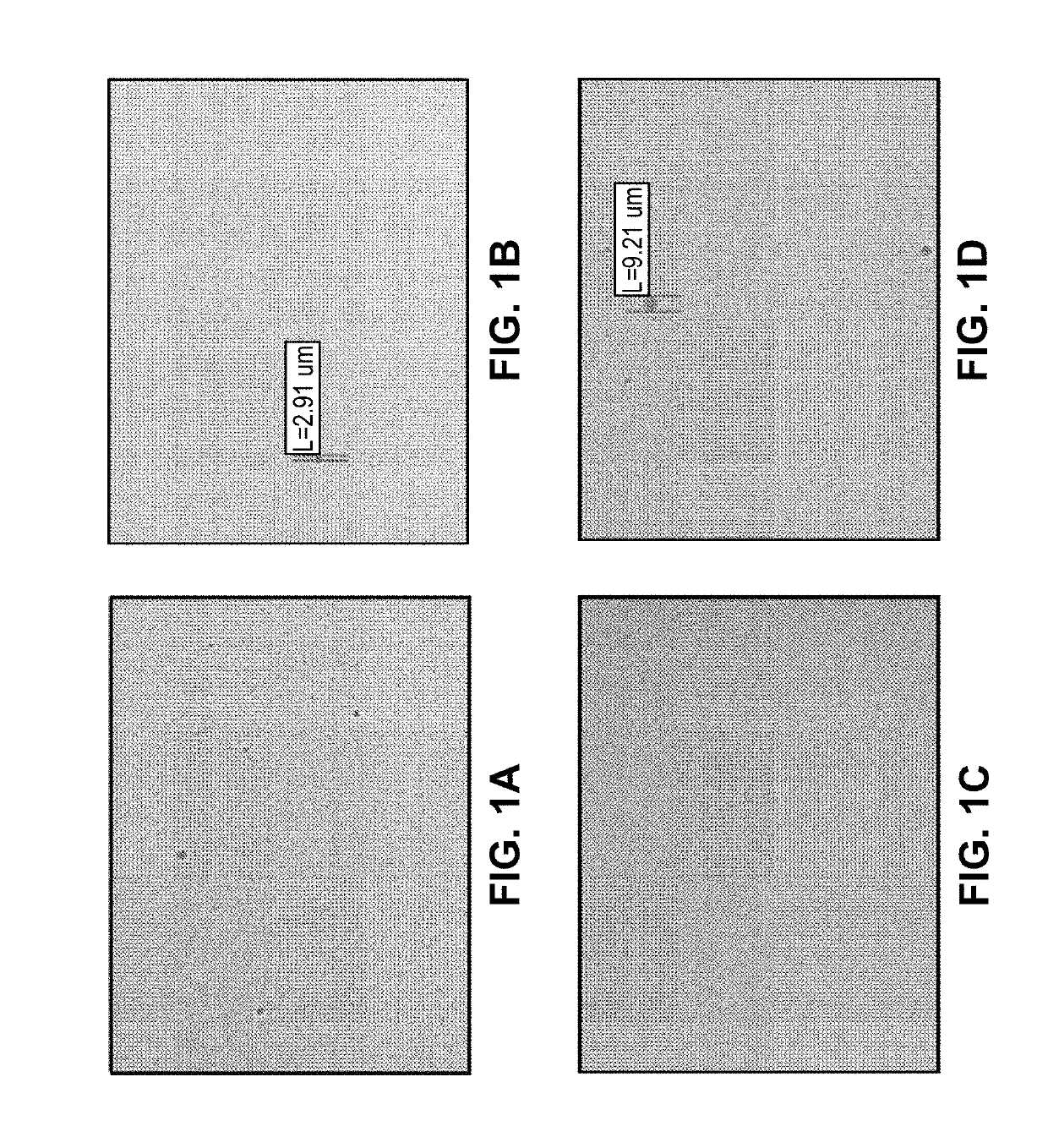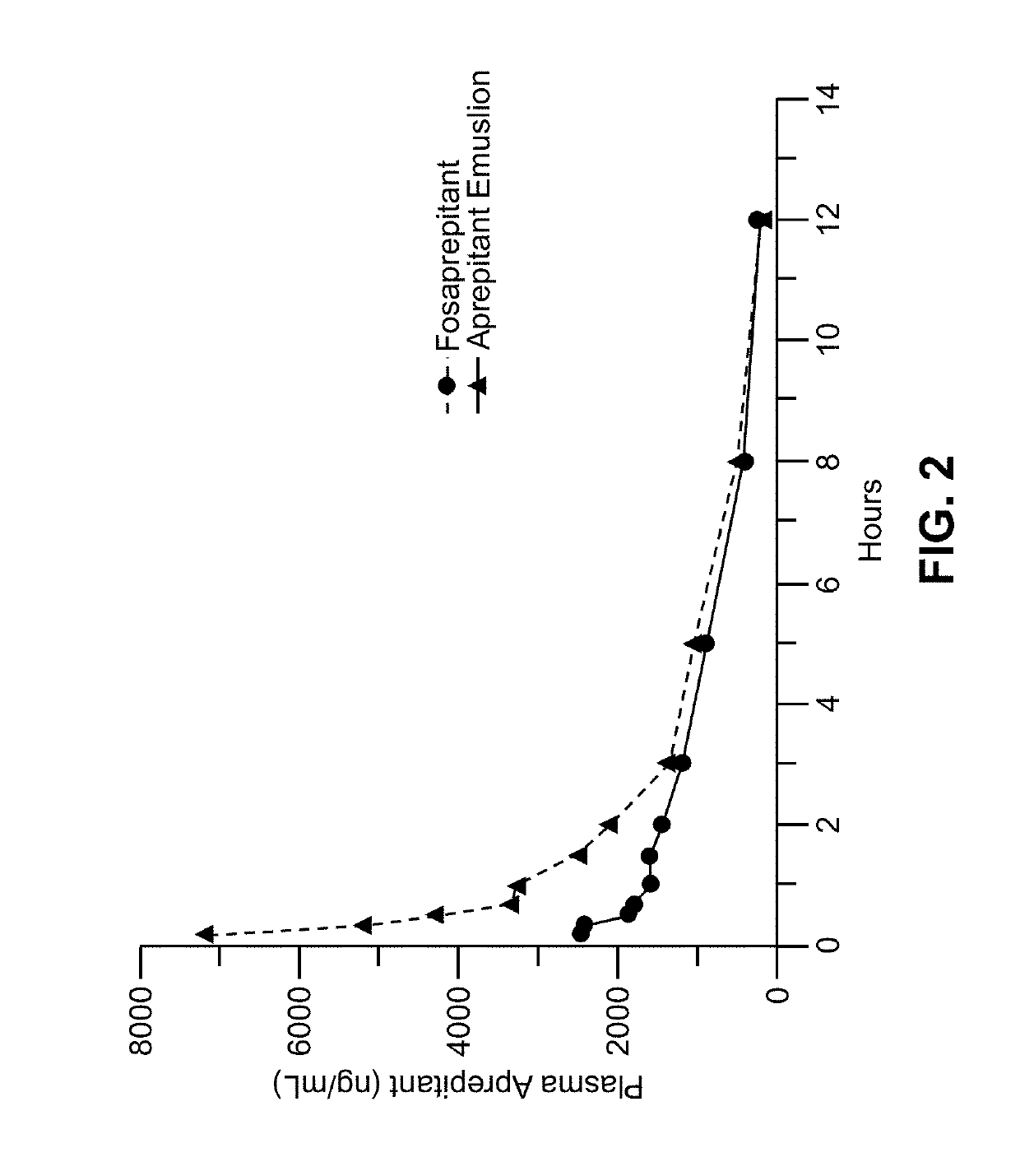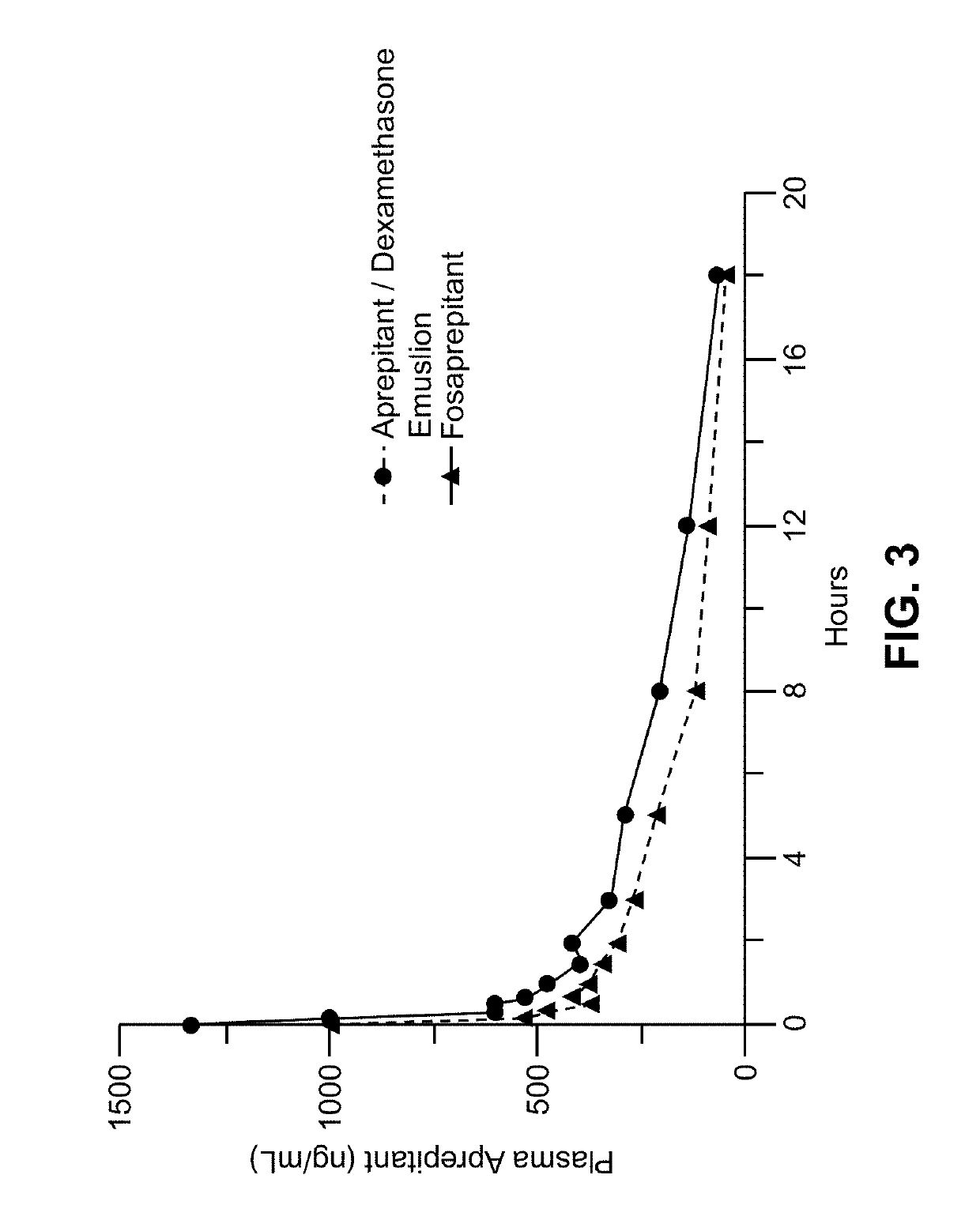Method of administering emulsion formulations of an nk-1 receptor antagonist
a technology of nk-1 receptor and emulsion formulation, which is applied in the directions of pharmaceutical delivery mechanism, organic active ingredients, oil/fat/waxes non-active ingredients, etc., can solve the problems of time-consuming and risk of infection and complications, critical emesis of patients, and the use of nk-1 receptor antagonist in oral dosage forms
- Summary
- Abstract
- Description
- Claims
- Application Information
AI Technical Summary
Benefits of technology
Problems solved by technology
Method used
Image
Examples
example 1
Aprepitant Emulsions for Intravenous Injection
[0125]To prepare the aprepitant emulsion, an oil phase was first prepared by combining 750 mg of aprepitant and 15.0 g of egg lecithin (LIPOID E 80) with 12.0 ml of ethanol. This mixture was dissolved by heating and stirring at 60° C. and 200 rpm for 15 min. To the resultant solution was added in 10.0 g of soybean oil. Heating at 60° C. and stirring at 200 rpm was continued for another 15 min. The aqueous phase was prepared by dissolving 5.60 g of sucrose and 0.500 g of sodium oleate in 70.0 ml of water for injection. This mixture was stirred at 300 rpm at room temperature for 30 min. The aqueous phase was then added to the oil phase and subsequently subjected to high-speed homogenization (Ultra-Turrax® IKA T25) at a speed of 20,000 rpm for 1 min to produce the crude emulsion. This crude emulsion was then passed 8 times through an ice-cooled high-pressure microfluidizer (Microfluidizer® M-110L, F12Y interaction chamber) at a pressure of ...
example 2
Aprepitant Emulsions for Intravenous Injection
[0126]To prepare the aprepitant emulsion, an oil phase was first prepared by combining 450 mg of aprepitant and 9.00 g of egg lecithin (LIPOID E 80) with 4.0 ml of ethanol. This mixture was dissolved by heating and stirring at 60° C. and 200 rpm for 15 min. To the resultant solution was added 6.00 g of soybean oil. Heating at 60° C. and stirring at 200 rpm was continued for another 15 min. The aqueous phase was prepared by dissolving 3.36 g of sucrose and 0.300 g of sodium oleate in 42.0 ml of water for injection. This mixture was stirred at 300 rpm at room temperature for 30 min. The aqueous phase was then added to the oil phase and subsequently subjected to high-speed homogenization (Ultra-Turrax® IKA T25) at a speed of 20,000 rpm for 1 min to produce the crude emulsion. This crude emulsion was then passed 8 times through an ice-cooled high-pressure microfluidizer (Microfluidizer® M-110L, F12Y interaction chamber) at a pressure of 18,0...
example 3
Aprepitant Emulsions for Intravenous Injection
[0127]To prepare the aprepitant emulsion, an oil phase was first prepared by combining 450 mg of aprepitant and 9.00 g of egg lecithin (LIPOID E 80) with 6.0 ml of ethanol. This mixture was dissolved by heating and stirring at 60° C. and 200 rpm for 15 min. To the resultant solution was added in 6.00 g of soybean oil. Heating at 60° C. and stirring at 200 rpm was continued for another 15 min. The aqueous phase was prepared by dissolving 15.62 g of sucrose and 0.300 g of sodium oleate in 42.0 ml of water for injection. This mixture was stirred at 300 rpm at room temperature for 30 min. The aqueous phase was then added to the oil phase and subsequently subjected to high-speed homogenization (Ultra-Turrax® IKA T25) at a speed of 20,000 rpm for 1 min to produce the crude emulsion. This crude emulsion was then passed 8 times through an ice-cooled high-pressure microfluidizer (Microfluidizer® M-110L, F12Y interaction chamber) at a pressure of ...
PUM
| Property | Measurement | Unit |
|---|---|---|
| volume | aaaaa | aaaaa |
| volume | aaaaa | aaaaa |
| volume | aaaaa | aaaaa |
Abstract
Description
Claims
Application Information
 Login to View More
Login to View More - R&D
- Intellectual Property
- Life Sciences
- Materials
- Tech Scout
- Unparalleled Data Quality
- Higher Quality Content
- 60% Fewer Hallucinations
Browse by: Latest US Patents, China's latest patents, Technical Efficacy Thesaurus, Application Domain, Technology Topic, Popular Technical Reports.
© 2025 PatSnap. All rights reserved.Legal|Privacy policy|Modern Slavery Act Transparency Statement|Sitemap|About US| Contact US: help@patsnap.com



